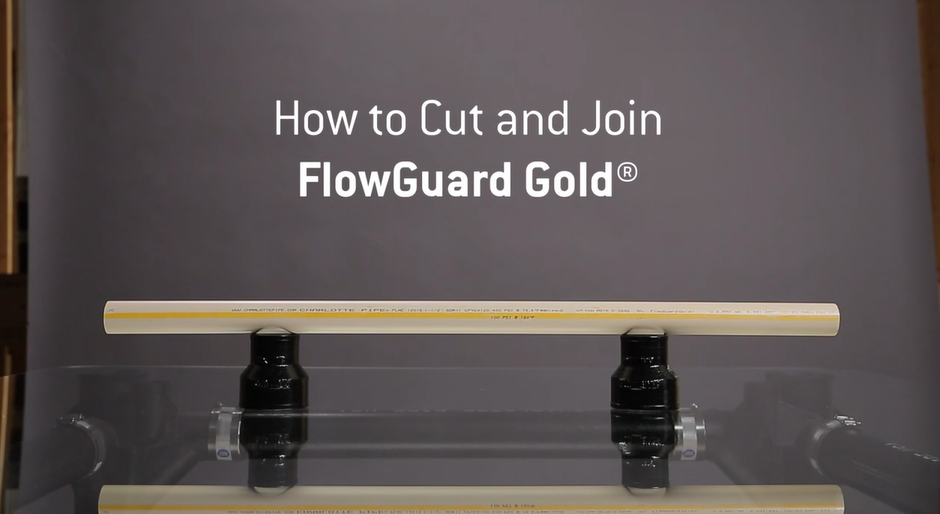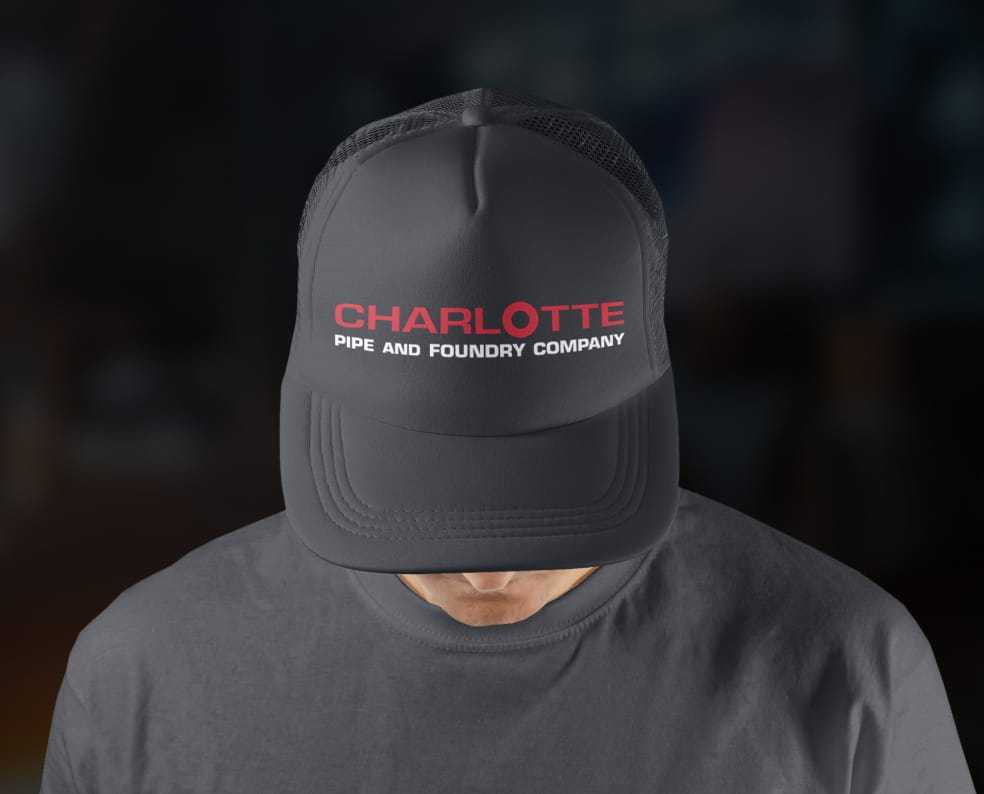Article
FlowGuard Gold Piping for Residential Construction: Benefits & Installation
In the world of construction, the choice of piping materials plays a pivotal role in ensuring the efficiency, longevity, and safety of hot and cold water systems in residential buildings. When it comes to selecting the best domestic water piping solution, there is one product that can ensure satisfaction in areas such as cost, chlorine-resistance, water pressure, and flow rates: FlowGuard Gold from Charlotte Pipe.
FlowGuard Gold CPVC has earned its reputation as a trusted and efficient choice for a wide range of domestic water systems. Whether you're looking to make a switch or are simply in need of a reliable water distribution pipe, FlowGuard Gold pipe and fittings offer benefits other plumbing materials cannot match.
What is FlowGuard Gold?
FlowGuard Gold CPVC, short for chlorinated polyvinyl chloride, is a type of plastic piping used for water distribution, delivering hot and cold water throughout a home. While it is not the only option for a domestic water system, there are a number of reasons and benefits for plumbing engineers and plumbing contractors to choose Charlotte Pipe FlowGuard Gold.
1. Quality Material
Lubrizol produces FlowGuard Gold compound from PVC resin incorporated with chlorine molecules, which transforms the material to CPVC. The addition of chlorine significantly increases the material’s temperature rating compared to standard PVC pipe. Therefore, FlowGuard Gold is able to offer better heat retention and lower hot water heating costs.
FlowGuard Gold pipe and fittings are also the only complete CPVC pipe and fittings system made from materials that are pressure rated by the Plastic Pipe Institute®. FlowGuard Gold pipe and fittings are tested to the highest performance standards and consistently outperform other CPVC materials by a significant margin, including:
18-92% higher sustained pressure resistance at elevated temperatures
33-80% higher resistance to impact fracture
Fittings that last up to 4-times longer at elevated temperatures and pressures
FlowGuard Gold is also non-toxic, ensuring the safety of water supplies and meeting the most stringent standards in the industry.
2. Single-Family-Friendly
FlowGuard Gold CPVC is suitable for delivering hot and cold domestic water in any residential application with pressure systems where temperatures will not exceed 180 degrees Fahrenheit. There are several reasons why it is the best choice for single-family construction.
Historically, copper pipe was the quintessential material in the world of residential construction. However, several challenges have since emerged that contributed to copper’s gradual decline in use and a shift toward recognizing CPVC as the superior choice:
Price: Copper piping carries a higher cost, both in terms of initial material cost and labor cost, leading it to be more popular for commercial applications than single-family or multi-family construction.
Joining method: Soldering copper requires a butane torch, while FlowGuard Gold CPVC uses a single-step cementing process. This eliminates the need for a torch, reducing the potential hazards associated with open flames.
Scaling: Unlike copper, CPVC is not susceptible to scaling, ensuring better long-term performance.
- Heat retention: FlowGuard Gold CPVC retains hot water better than copper, promoting energy efficiency.
While the benefits of CPVC over copper piping are widely accepted, in some areas of the U.S. there is another material that rivals CPVC for the single-family construction market.
PEX piping (crosslink polyethylene) is a plastic piping system used in residential plumbing. However, there are significant differences in the chemistry, construction, and performance between PEX and CPVC. Understanding these differences can help you deliver better reliability and water quality to your customers while protecting the reputation of your business.
Comparing FlowGuard Gold CPVC to PEX Piping for Single-Family Construction
FlowGuard Gold CPVC and PEX piping have emerged as today’s primary contenders to copper for hot and cold water systems. Both have their merits, but understanding the differences makes it clear that FlowGuard Gold is the best option for your single-family construction project. Let's dive into a detailed comparison, where several key differences become apparent:
Chlorine Resistance
One of FlowGuard Gold's standout features is its exceptional chlorine resistance. In the United States, water is often chlorinated heavily to disinfect it and make it safe for consumption. This is where FlowGuard Gold shines. The addition of a chlorine in CPVC compound significantly enhances its chlorine resistance.
In contrast, PEX pipes may degrade under certain conditions due to chlorine exposure.
The addition of a chlorine molecule to the CPVC compound significantly enhances its chlorine resistance. In contrast, PEX pipes may degrade under certain conditions due to chlorine exposure.
Flow Rate
CPVC uses fittings similar to legacy copper solutions, in which the pipe is inserted into the fitting. In fact, FlowGuard Gold CPVC is Copper Tube Size (CTS) manufactured to standard dimensional ratio (SDR) 11, ensuring the same pressure rating across all sizes. The inside diameter of a FlowGuard Gold fitting is the same as the pipe. So, there is no reduction in flow through the fittings.
With PEX, the pipe fits around the outside of the fitting so the internal diameter of the pipe is reduced at each fitting. For every ½” fitting, a PEX fitting can introduce 2 to 3 psi of pressure drop. In comparison, FlowGuard Gold fittings at the same size introduce 0.3 psi of pressure drop. This means that FlowGuard Gold maintains better flow rates than some PEX options.
Speed of Installation
FlowGuard Gold also excels in the speed of installation, making it a favorite among plumbing professionals as it saves on labor. As everyone knows, labor is often a plumber’s greatest expense. The single-step solvent cementing process is a time-tested and well-known installation method for all plumbers.
PEX installations, on the other hand, may require specialized tools and crimping methods, which can be more time-consuming, demanding in terms of equipment, and require additional training.
FlowGuard Gold Installation Tips
To unlock the benefits of superior FlowGuard Gold CPVC performance, proper installation is crucial. Here are some essential tips:
- Cutting pipe properly: While there are many tools applicable for cutting plastic pipe, the most important thing is to get a square cut. Adhere to the manufacturer’s guidelines to ensure proper usage of your tool of choice.
- Applying the right solvent cement: Use the appropriate amount and type of solvent cement for a leak-free, cross-molecular bond. Too much cement can make it challenging to properly align and assemble pipes and fittings or weaken the joint integrity. Too little cement on larger diameters will lead to a weakened or incomplete bond and increased risk of leaks. Although the fit between FlowGuard Gold pipe and fittings is very tight, don’t make the mistake of forgetting cement and installing a dry fit.
- Allowing for thermal expansion: It is crucial to remember that for every 50°F increase in temperature, CPVC material will undergo an expansion of approximately 1 inch per every 50 feet of straight pipe. Notably, if the installation occurs during particularly cold weather, the pipes will be shorter than their eventual length during service. This aspect can be particularly significant in the case of hot water lines. For instance, a 50-foot section of pipe installed at 20°F could expand by up to 2 inches when in use at 120°F. Be sure to account for expansion to ensure the long-term integrity of the system.
- Chemical compatibility: It is critical for installers to know what products are incompatible with CPVC, as certain materials can cause pipe failure.
For step-by-step instructions on how to cut and join FlowGuard Gold, we recommend watching this video.
Tips for FlowGuard Long-Term Maintenance
To ensure the longevity and reliability of FlowGuard Gold CPVC piping, consider these maintenance tips:
Over time, plastics can become more brittle. While CPVC can last a long time, it's essential to follow specific instructions for modifying pipe lines after many years of use.
Regularly inspect pipe clamps, supports, and hangers, and repair or replace damaged or loose components that can stress the pipes.
FlowGuard Gold CPVC piping offers numerous benefits over alternative materials like PEX and copper for residential construction, including its exceptional chlorine resistance, reliability, and ease of installation. For local support and resources, we encourage you to find a Charlotte Pipe sales representative near you.
FlowGuard Gold CPVC is trademarked by Lubrizol, a trusted name in the industry since the 1950s.




